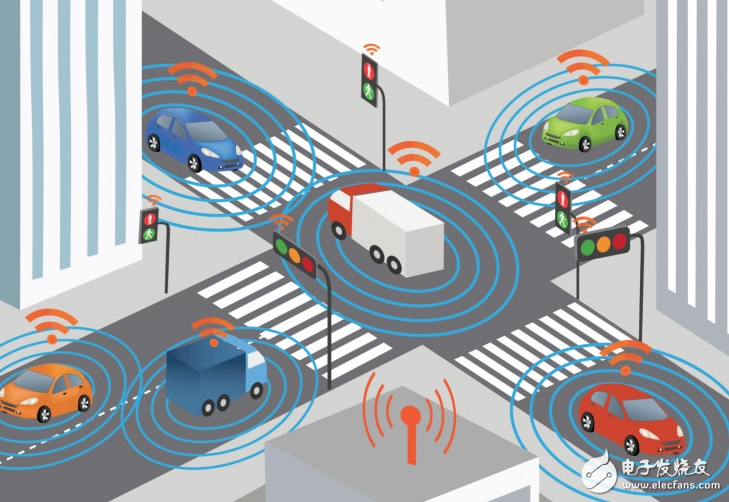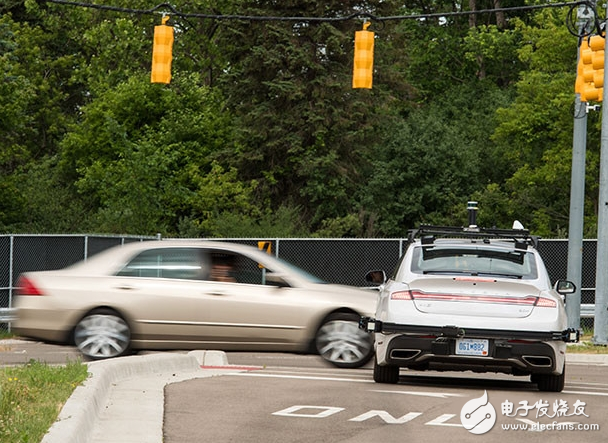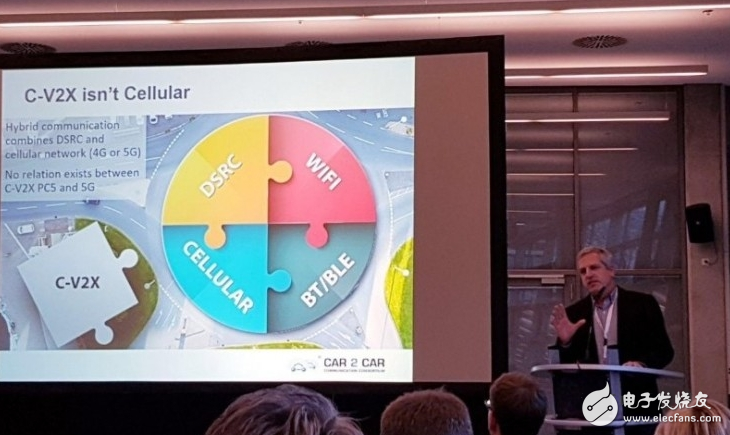Under the influence of the C-Roads project, in 2017, countries are already deploying road infrastructure for ITS-G5 technology. Highly automated car supporters should never lose sight of the value that V2V can bring to autonomous driving. Communication technology significantly enhances security, not only for autonomous vehicles, but also for human-driven vehicles that are driving on the same road.

If you think that autopilot and car communication (V2V) are two different issues, then you have to rethink.
Proponents of autonomous driving often take advantage of the utopian future of a completely accident-free road, but rarely mention the long, gradual transition period that must pass before. During this transition period, autonomous vehicles and "historical" vehicles that retain the driver also need to travel on the same road, facing the same danger.
If the goal of driving autonomous vehicles is to make traffic safer, then it is time for people developing highly automated vehicles to address the "communication failure" between people and machines.

* Humans are more dangerous when driving. In the picture, a car driven by a person flashes a red light when the autopilot test car passes through the intersection.
How to make autopilot vehicles look more?Automated vehicles are often unable to speculate on human intentions. They don't do well in predicting the sudden driving behavior of other drivers, which means they can't do anything about defensive driving. At the same time, humans are much more rude on the road than we think.
So what should I do? Only auto-driving vehicles are allowed to drive on the road? This solution is too "Utopia". And the reality is that human-powered vehicles will continue to shuttle freely on the road, keep up with the front car and suddenly change lanes indefinitely.
Alternatively, we can install more sensor technology on self-driving vehicles, giving them a “see-through†function. Unfortunately, in the real world, even X-rays cannot read the thinking of human drivers.

*Autotalks CEO Hagai Zyss
Hagai Zyss, CEO of the Israeli company Autotalks, has his own set of opinions in the face of these problems.
At the Detroit North American International Auto Show in early January, he explained to the audience that "the lack of coordination between autonomous vehicles and human-powered vehicles is the result of autonomous vehicles not getting more effective information."
He said, “The car manufacturers present are aware of the need to establish a dedicated car-to-vehicle communication mechanism. This is another layer of security that we can start today to save lives.â€
But unfortunately, the discussion about vehicle communication was eventually "hijacked" by mobile communication advocates such as Qualcomm. The problem of V2X has become a problem of choosing DSRC (dedicated short-range communication) or 5G technology.
Of course, this is also the history of V2X. For the first time, more people are talking about 5G instead of DSRC.
Some people think that 5G will completely replace the DSRC requirements, while others believe that DSRC can not be replaced because it can meet the strict delay requirements of these applications. But one of the biggest questions is, can 5G navigation meet the delay requirements of V2V to avoid collisions?
It is understood that so far, no 5G navigation technology has been tested.
There are too many voices in the market to confuse the audio and video, which seems to form a technical competition between DSRC and 5G, but let people gradually forget that the real goal of V2V is to be safe. In the past seven to ten years, the DSRC has undergone rigorous testing and trials.
Zyss said: "(Original) From today, we can save lives, but we are watching 5G, a technology that has not really come out yet."
It is worth noting that Autotalks believes that hybrid mode is feasible, that is, cellular technology and DSRC coexist. Automakers are already using cellular technology like LTE to connect vehicles to the cloud to transfer content, download applications and update them. However, Zyss believes that cellular V2X (C-V2X) does not replace DSRC.
Not to mention that the 5G network has not yet appeared, the cellular network itself needs to solve the problem that the interconnected devices are synchronized with the base station. Zyss says that this synchronization model is very different from what V2V communication requires, and it must be done instantaneously between objects moving at high speed.
Some insiders also said that supporters who support the application of 5G to C-V2X are taking the old path of DSRC developers, trying to reproduce what DSRC supporters have designed, built and tested. In addition, cellular supporters must overcome the limitations of cellular networks in terms of efficiency and clock source when using technology for V2V applications.
Zyss believes that if autopilot taxis are really going to be available in 2019 or 2020, the industry's "safe and dedicated communication layer" installed on autonomous vehicles and human-powered vehicles may not be cautious.
Wire Harnesses And High Speed Connecting Cables
Dongguan SOLEPIN Electronics Co., Ltd , https://www.wentae.com
